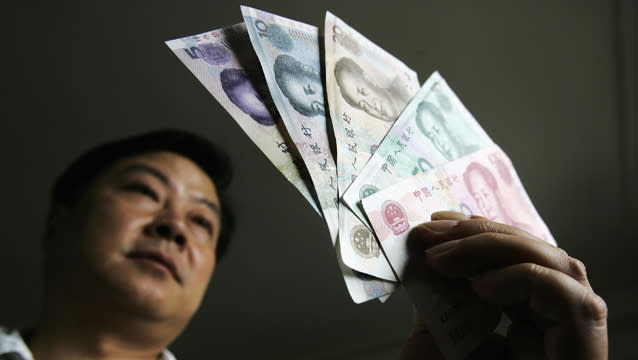China Slowdown Now a Clear & Present Danger

Concerns about China’s economy intensified Thursday after a private measure of manufacturing came in at its lowest level in nine months. The HSBC/Markit flash China PMI survey also featured a steep drop in new export orders, indicating China is suffering from global weakness, notably in Europe.
Even more troubling is a sharp rise in interbank lending rates, suggesting Chinese banks are becoming wary about lending to each other. If you recall, the crisis of 2008 reached its apex when banks stopped lending to each other and fears of “counterparty risk” were manifest. Chinese interbank lending rates aren’t at extreme levels yet but could get there in a hurry if they continue to rise in such dramatic fashion.
According to Bloomberg, the seven-day repurchase rate rose to 10.77% overnight, its highest level since March 2003 while the one-day rate rose “by an unprecedented 527 basis points to an all-time high of 12.85%,” and intraday rates hit a record 30%.
Related: China Has Been and Will Continue to Be a Bad Place to Invest: Jim Chanos
Earlier this week, Henry and I discussed warnings from Fitch Analyst Charlene Chu who notes, among other things, overall credit in China has risen to $23 trillion from $9 trillion in 2008.
“They have replicated the entire U.S. commercial banking system in five years,” she observes.
According to Chu, “there’s no way [China] can grow out of their assets problems as they did in the past.” Her warnings about the size and uncertainty in China’s shadow banking system seem very prescient given the latest developments there.
Related: China’s Credit Bubble About to Implode: Fitch Analyst
To date, China’s central bank has taken no action to address the “cash crunch” in the banking system, either via rate cuts or reverse repos that would add liquidity to the banking system. The PBOC’s failure to act is raising speculation that China’s central government is intentionally engineering real-world stress tests for its banks.
“The central bank probably won’t come out to intervene unless there is a sharp decline in economic growth and large capital outflows,” says Chen Qi, a strategist at UBS Securities, in an interview with Bloomberg.
Fund flow data suggest the “hot money” is already fleeing China, where the main stock proxy is down 14% since its February high. So if the PBOC wants to cool things off, they are certainty getting their wish; the central bank has plenty of room to cut rates and China's huge foreign currency reserves suggest the government has ample firepower to address these issues.
Still, the question now is whether Chinese policy makers will be able to engineer a “soft landing” before stresses in China’s banking system metastasize.
Related: Why Slower Growth is GOOD for China: Stephen Roach
Aaron Task is the host of The Daily Ticker and Editor-in-Chief of Yahoo! Finance. You can follow him on Twitter at @aarontask or email him at altask@yahoo.com

